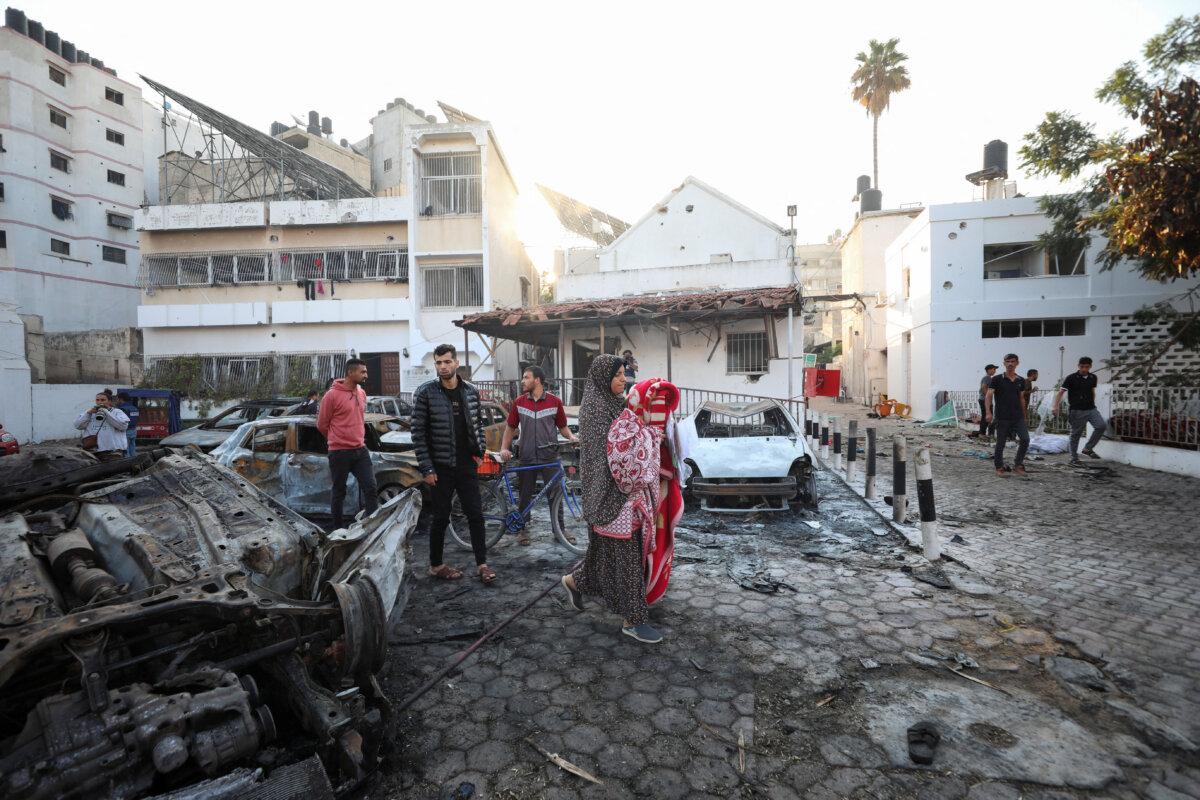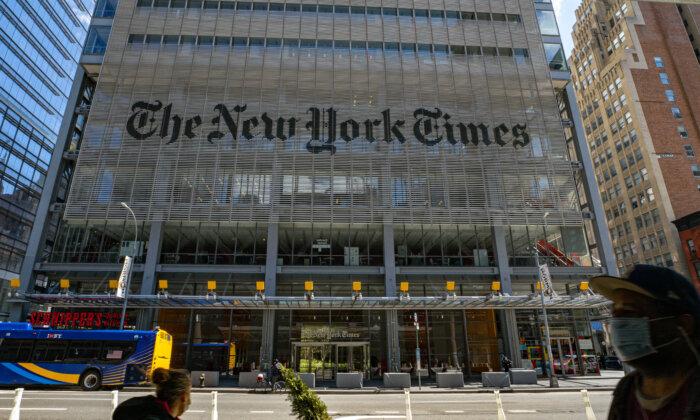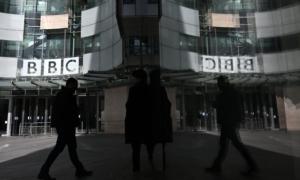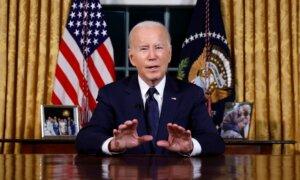The New York Times coverage of an explosion at a hospital in Gaza was lacking, the paper said in a new note to readers.
The NY Times “relied too heavily” on claims from Hamas, a terrorist group that murdered civilians in Israel just days prior, the paper acknowledged.
The paper on Oct. 17 reported that an Israeli airstrike had hit the hospital, killing 500. The paper cited the Palestinian Health Ministry, which is managed from the West Bank. Hamas, which runs Gaza, also blamed Israel.
“At least 500 people were killed by an explosion at a hospital in Gaza City on Tuesday that Palestinian authorities said was caused by an Israeli airstrike,” the paper said at the time.
The headline on the paper’s front page stated, “Israeli Strike Kills Hundreds in Hospital, Palestinians Say,” accompanied by an image of a destroyed building that was actually from Khan Younis, not the Al-Ahli Baptist Hospital in Gaza City.
A number of other news outlets also sent breaking news alerts and reported initially that the blast was caused by an Israeli airstrike, with some not being clear with their sourcing for the allegations.
Palestinian authorities have still not provided proof of their claims that Israel was responsible, while Israel has provided video and other evidence supporting its position that the culprit was a misfired rocket launched by Palestinian Islamic Jihad, another terrorist group that has been linked to Hamas.
U.S. officials have assessed, based on videos and other evidence, that Israel was not behind the explosion.
“We are still gathering information. But based on our initial assessment, it is the assessment of the intelligence agencies of the United States government that the explosion at the hospital was the result of a failed rocket launch by militants in Gaza,” Matthew Miller, a U.S. spokesperson, told reporters in a briefing.
U.S. President Joe Biden said in an appearance with Israeli Prime Minister Benjamin Netanyahu that “based on what I’ve seen, it appears as though it was done by the other team, not you.”
UK intelligence has determined the hospital blast was likely caused by Palestinian militants, not Israel, UK Prime Minister Rishi Sunak told lawmakers on Oct. 23.
“On the basis of the deep knowledge and analysis of our intelligence and experts, the British government judges that the explosion was likely caused by a missile, or part of one, that was within Gaza towards Israel,” Prime Minister Sunak said.

Hamas terrorists entered Israel on Oct. 7, murdering more than 1,300 people, leaving thousands of others wounded, and taking hundreds of hostages, according to Israeli officials, video footage, and eyewitness accounts. Israel began striking Gaza afterwards to try to destroy Hamas.
The NY Times previously defended its reporting, saying that “we report what we know as we learn it,” and “we apply rigor and care to what we publish, explicitly citing sources and noting when a piece of news is breaking and likely to be updated.”
In the new note, the NY Times did not apologize, but said improvements could be made moving forward.
“Given the sensitive nature of the news during a widening conflict, and the prominent promotion it received, Times editors should have taken more care with the initial presentation, and been more explicit about what information could be verified,” the paper said. “Newsroom leaders continue to examine procedures around the biggest breaking news events—including for the use of the largest headlines in the digital report—to determine what additional safeguards may be warranted.”
The war that recently started has already claimed the lives of at least 23 journalists, according to the Committee to Protect Journalists. Others were reported injured, missing, or detained.
“Imagine if someone was on the ground an hour after the blast, shooting live video, someone from a credible news source,” he said. “That would have had a lot of power.”







